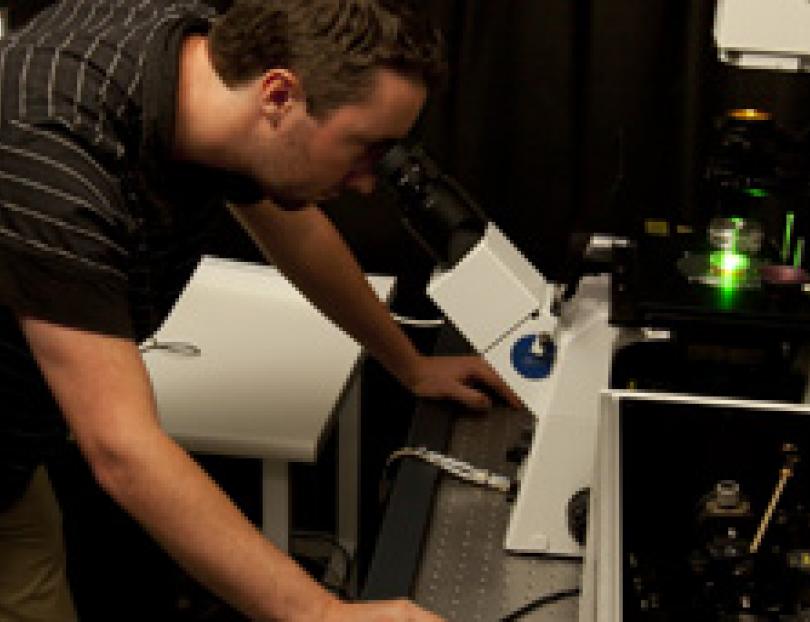Common Applications
| FLIM: | Each fluorescent dye displays a characteristic fluorescence lifetime, namely the length of time following excitation that the dye will remain in its excited state emitting fluorescence. This fluorescence lifetime is a quantitative signature that can be used to distinguish between different fluorescent dyes or spectrally similar fluorophores, even those emitting the same fluorescent colour. This technique can help determine local environment parameters (e.g., pH), analyze oxygen, water, or ion concentrations as well as differentiate structures deep inside tissue and eliminate background fluorescence |
| FCS: | Fluorescence Correlating Spectroscopy allows for determining diffusion coefficients and concentrations of fluorescently labelled molecules at nanomolar concentrations, both in vitro and in live cells. It is mostly useful for indirect studies of molecular activity in plasma membrane, in cytosol and in nucleus via following relative changes in diffusive behavior and/or concentration. This technique can also determine the mobility of molecules (e.g. movement, aggregation, association, dissociation, and conformational changes), help studying the intracellular dynamics (e.g. diffusion, active transport) and determine the stoichiometry of complexes |
| FRET: |
FRET (Lasers Förster Resonance Energy Transfer or Fluorescence Resonance Energy Transfer) is a technique using two carefully selected fluorophores that when in close enough proximity (10–100 Å), and suitable orientation, energy is transferred nonradiatively from the excited donor fluorophore to another acceptor fluorophore. It is largely used to investigate inter- and intramolecular distances, between one or more molecules. It can also monitor conformational changes of molecules and environmental parameters (e.g., pH) via FRET sensors. |







